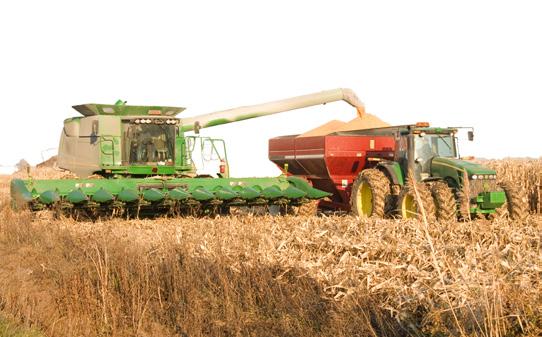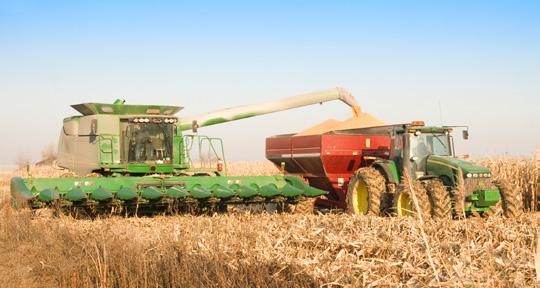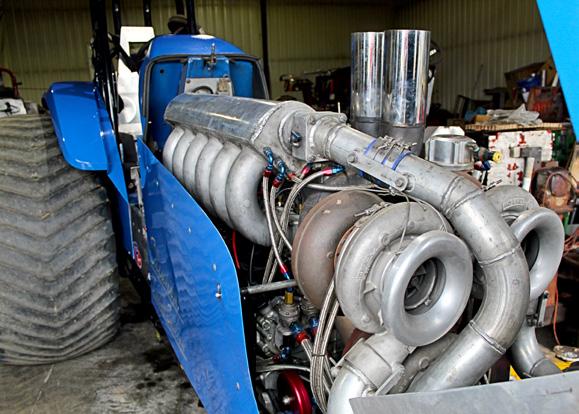
4 minute read
CorTrust Bank
“I’m blessed I’m mechanical enough, I get a lot of work from other tractor pullers. I’ve actually designed a few pieces and parts and made them which have helped the whole tractor pull industry.”
One of his tractors even migrated across the Atlantic. “I built a tractor in 1992 and we took it to the National Farm Machinery Show in Louisville, Ken. But we didn’t even get to bring it home. I sold it there to Peter Clark and it went to England. That summer, he blew the motor out of it. So I went over there for two weeks and re-built it for him. Then I had a chance to pull it in England and in Amsterdam, Holland.”
Advertisement
The original shop his dad built in 1959 is still in use. “There has been Grand National Super Stock sitting right there. We’ve got turning lathes, drilling machines, a shaper. We can make gears and internal spines; we build couplers; we make our own transmissions and power axles. There isn’t much in the pulling world that has to leave the shop, unless it needs heat-treating or needs something super special. We do it all right here – it just takes a lot of time,” Mark said.
He gave credit to two part-timers who work with him. Jake Law is a machinist who works at Handel Repair. And Bobby Wagner does truck equipment repair for Mettler Fertilizer. Mark and Cindy’s son, Tyler, also helps out when he’s not working as a CNC machinist at PMC LLC in Emery. “They make me look good,” Mark said.
Menno farmer Chris Fergen is also an essential cog in the machine, spraying the crops and providing other essential labor at the Ulmer farm in exchange for the use of Mark’s machinery. Cindy usually only travels to tractor pull events which aren’t too far away. “A lot of wives say to me they’d never let their husbands be gone like that all the time. But I knew when I married him 43 years ago – all the Ulmers are pullers.”
When their daughter, Jessica, was little, she wasn’t as accepting of Dad leaving for the next tractor pull. “She’d get mad and not talk to him for two or three days,” Cindy said.
Jessica and her husband, Andrew Bruzek, have three daughters, Jemma, 9, Jayda, 7, and Jersey, 5. Tyler and his wife, Heidi, have two sons, Aiden, 10, and Henry, 3.
Cindy grew up north of Olivet on the farm of her parents, Edgar and Elda Schaeffer. About 20 years ago, Cindy started a greenhouse operation on the farm. Then they bought a greenhouse in Menno and attached a flower shop to it. She
Putting our business yours. for to work
Raise Your Expectations

With 37 convenient locations throughout South Dakota and Minnesota CorTrustBank.com

A look at the engine of “Eleanor,” the tractor leading the light super stock class on the Outlaw Truck & Tractor Pull circuit this year.
was in the greenhouse and flower business for about 15 years before health issues pushed her to sell the property in 2017. “Now I’m just a stay-at-home wife, which I really like.” In 2012, they moved from the farm to a house in Menno adjacent to the flower shop.
On top of their own children and grandchildren, they have an extended family all over the country. “The tractor pull family we’re a part of just took to all of us, including Tyler and Jessica. The memories we’ve made are unbelievable. We’ve made a lot of friends in different states.” Cindy said.
Mark said, “If we have a flat tire traveling, we pretty much know somebody, somewhere, that isn’t too far to give me some help. I don’t need AAA.” All of the work and travel is worthwhile because of the friends they’ve made. “That and the horsepower,” he said.
“Everything is so modified. There’s very little you can go over to the Ford New Holland dealer and just pick up. Motor-wise, there’s only two pieces in this whole tractor that are original – the block and the crankshaft are still Ford New Holland.” The blue tractor is named “Eleanor” and is the points leader in its class right now. Their other tractor is a Case IH called “The Weapon” which has been on the circuit for a decade and is running second to Eleanor in the class this year. “The fuel systems are pretty elaborate. We’re computermonitored so we’ve got data logs. We can tell if something’s going wrong just by reading those,” he said.
“It’s come a long ways from when we used to pull with the farm tractor. We used to cultivate in the day and pull at the county fair in the afternoon or night with the same tractor. The level we’re at on these is unreal – you take a 100 horsepower farm tractor and turn it into a 3,000 horsepower pulling tractor. Then to be able to say I build a lot of it myself is the other accomplishment. It’s quite a feeling of success.”










